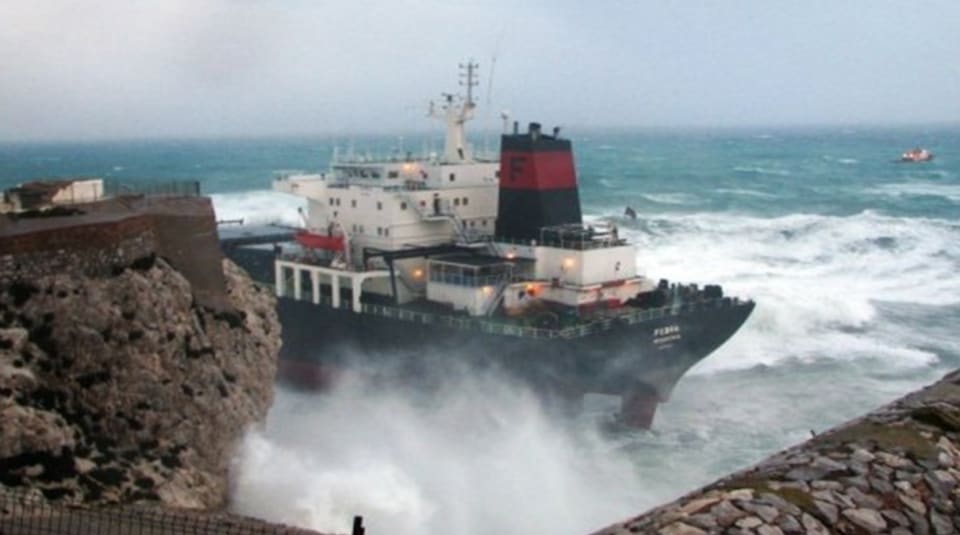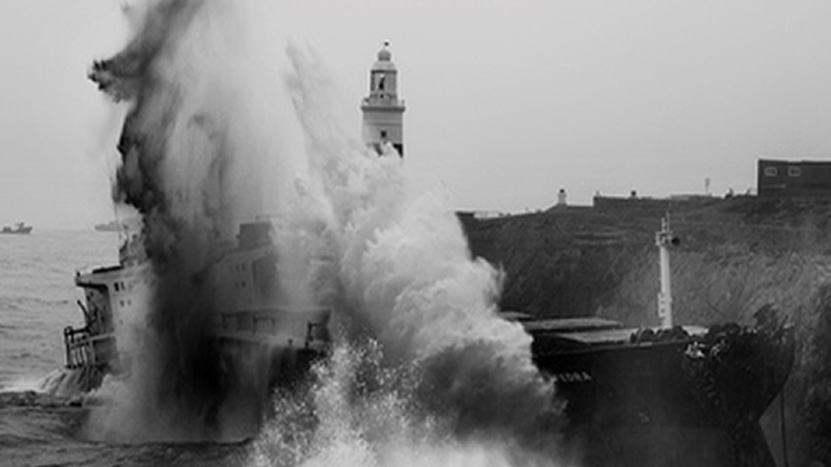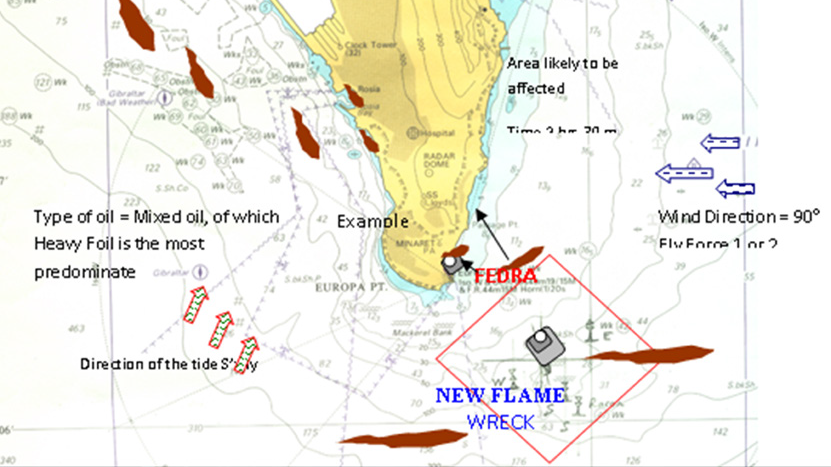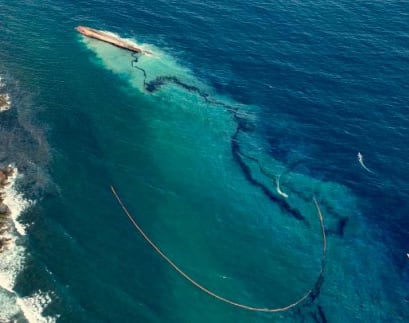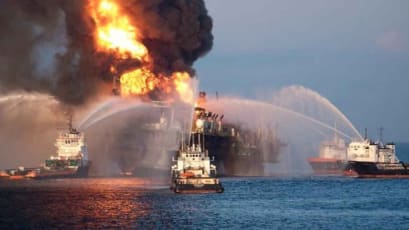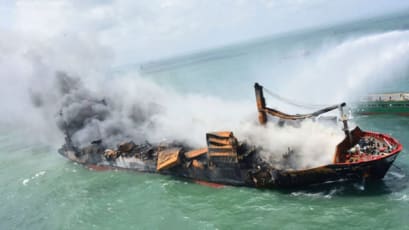Battling the elements: responding to the MV Fedra oil spill
MV Fedra ran aground and smashed against Europa Point, the southernmost tip of Gibraltar, on the 10 October 2008, following severe gale force winds measuring 12 on the Beaufort scale.
Background
On 10 October 2008, MV Fedra, a Liberian-registered bulk carrier, faced extreme meteorological conditions with sustained winds exceeding 65 knots and waves over 10 metres. Anchor dragging and mechanical failure led to grounding at Europa Point, Gibraltar. Subsequent hull breaches released an estimated 150 tonnes of Heavy Fuel Oil (HFO) into the surrounding marine ecosystem, threatening desalination intakes and ecologically sensitive coastlines.
Response activation
Initial emergency response actions prioritised the safe evacuation of the 31-member crew under severe weather conditions. Joint operations by Spanish and Gibraltarian emergency services ensured the rescue mission’s success. Once human safety was secured, the focus shifted to oil containment and environmental mitigation.
Context of OSRL’s involvement
OSRL’s activation on 12 October 2008 ensured integration of specialised equipment and methodologies to mitigate spill impact. OSRL was engaged as a technical partner to provide high-level expertise in spill containment, shoreline impact mitigation, and response coordination. Key activities included rapid deployment of technical advisors, predictive oil modelling, and equipment mobilisation to high-risk areas.
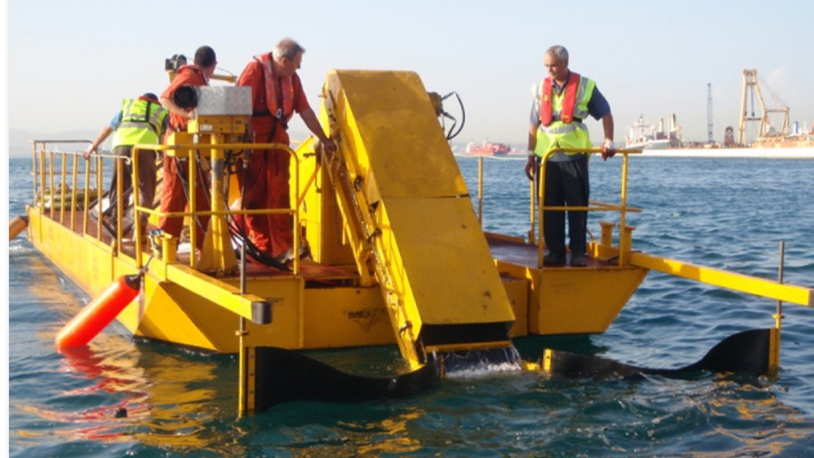
Main goals and priorities
- Conduct comprehensive Site Response Plans (SRPs) prioritising areas based on environmental sensitivity, proximity to essential infrastructure, and public exposure.
- Deploy targeted containment systems most suitable to each site to intercept oil migration.
- Facilitate high-efficiency oil recovery aligned with international standards and best practices.
- Coordinate response actions across multiple agencies to ensure cohesive operations between the Client and local governments.
Unique challenges
- High sea states and gale-force winds restricted safe operational access and limited deployment of containment infrastructure.
- Structural fragmentation of the MV Fedra increased oil dispersion, complicating containment.
- Immediate proximity of the spill to desalination intakes heightened the need for precision in protective measures.
- Threat to sensitive marine zones and commercial marinas.
Response methodology
OSRL implemented an integrated response framework with the following core components:
- SCAT and surveillance: Detailed coastline assessment surveys identified environmental sensitives at each site and informed the decision on the most appropriate response strategy for optimal use of manpower and equipment. Helicopter and UAV-based reconnaissance delivered real-time oil spread and thickness data, supporting adaptive response strategies.
- Predictive oil spill modelling: Advanced simulation tools provided spill trajectory forecasts, using information such as oil type and quantity, location of the spill, predicted weather, and sea temperature. These models provided invaluable visual resources for our teams, enabling proactive deployment of resources to high-risk zones.
- Strategic containment and recovery: Calm weather and sea conditions permitted the use of heavy-duty ocean booms to encircle key infrastructure, preventing oil ingress into desalination facilities. Skimmers, pumps, and storage tanks were deployed for high-volume oil recovery at sea and along affected shorelines.
- Waste management protocols: Designated zones for segregation and environmentally compliant disposal of recovered oil and debris minimised secondary impacts.
Results
Through coordinated efforts, the spill response contained 95% of the released HFO within 72 hours. Critical infrastructure, including desalination plants, remained uncontaminated, while intensive shoreline cleanup restored impacted zones to pre-spill environmental conditions. A collaborative framework enabled seamless operation across multiple stakeholders, minimising long-term ecological damage.
Incident Timeline
- 10 October 2008
- MV Fedra grounds at Europa Point, Gibraltar. Hull breaches release 150 tonnes of HFO.
- 11 October 2008
- High-risk operation to evacuate 31 crew members in extreme weather.
- 12 October 2008
- OSRL arrives on scene. Protective booms are deployed to shied desalination plants and commercial areas.
- 13–15 October 2008
- Predictive modelling, aerial surveillance and SCAT identify high risk areas and guide response strategy.
- 16 October 2008 Onwards
- Results: 95% of spilled oil is contained and recovered. Sensitive infrastructure remains unaffected.
- Long-Term: Shoreline restoration achieves environmental benchmarks. Collaborative response demonstrates effective multi-agency coordination.
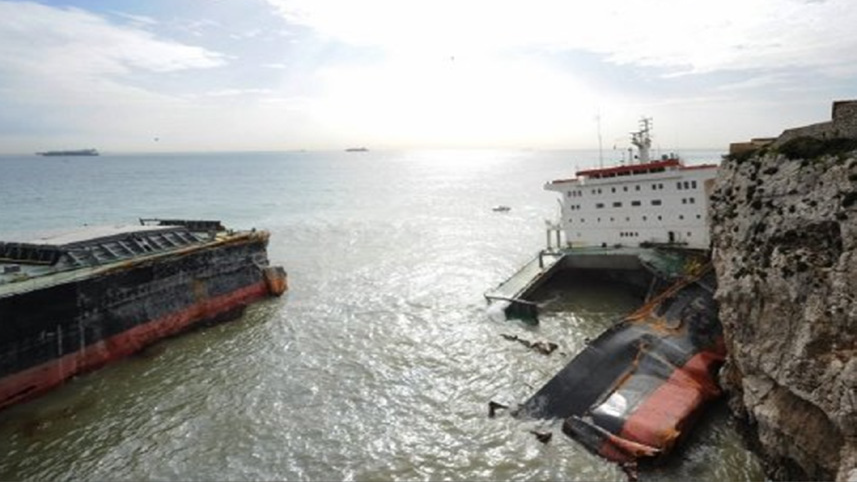
Key learnings
- Early mobilisation of specialised resources and integration with local agencies are critical in mitigating spill impacts.
- Predictive tools and real-time monitoring significantly enhance response efficiency and decision-making.
- Effective communication and coordination among stakeholders streamline resource allocation and operational execution.
Why choose OSRL
With decades of experience and a global team of experts, we provide proven solutions tailored to diverse challenges. Our extensive inventory of specialised equipment enables swift and effective responses to spills of all magnitudes. We collaborate with local organisations and regulatory bodies worldwide, ensuring seamless integration and alignment in response operations. By leveraging the latest advancements in spill response, we continuously enhance our methods and capabilities to address evolving environmental and industry needs.
Want to talk about spill response?
OSRL offers a holistic approach to response, with solutions for offshore, inland and subsea incidents. Our teams are trained to operate in all environments—from remote regions to extreme cold—and bring specialised capability to all aspects of spill response, including areas like oiled wildlife that require specific expertise. Our members get access to technical advisors, our Global Dispersant Stockpile, aviation services, and equipment hire solutions.
Find out more about our Membership options.

